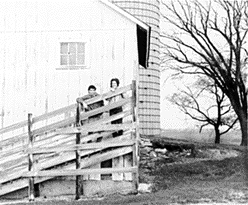GLIMPSE OF NEBRASKA
Nebraska has been a travel destination since at least the 18th century, when European pioneers passed through the region for the first time. Today, tourism is Nebraska's third leading earner of revenue from outside the state.
Geography, Climate and Wildlife
“The Cornhusker State” is bordered by South Dakota to the north, Iowa and Missouri to the east, Kansas to the south, and Colorado and Wyoming to the west. Nebraska's Dissected Till Plains region (in the east) has rich soil suitable for farming. The Great Plains (in the west) are home to the Sandhills, the largest sand dune area in North America. Grasses in this region make it useful for raising cattle.
Nebraska experiences a variety of weather, including sunny skies and cool summer breezes, as well as tornadoes, thunderstorms and blizzards. Spring and fall are generally pleasant in Nebraska.
Nebraska has a variety of wildlife. The buffalo, important to the Native Americans and white settlers of the region, can still be found. Other mammals in the state are beaver, deer, antelope, bobcat, fox, badger, coyote, rabbit and opossum. Game birds such as pheasants, ducks, geese and quail are common.

Nebraska's roots are in its rural communities.
People in Nebraska
Recent census data show that the state's ethnic mix includes Germans (39.9%), English (13.8%), Irish (11.3%), Swedes (6.7%), Czechs (5.3%), African Americans (3.6%), people of Native American descent (.07%), Asian Americans (.07%) and other races.
In 1990, the U.S. Bureau of the Census reported 1,578,385 people living in Nebraska. About four-fifths of Nebraskans live in the eastern third of the state, which includes the state's two largest cities, Omaha and the capital city of Lincoln. The 10 largest cities by population are:
- Omaha, with 335,795 people
- Lincoln, 191,972
- Grand Island, 39,386
- Bellevue, 30,982
- Kearney, 24,396
- Fremont, 23,680
- Hastings, 22,837
- North Platte, 22,605
- Norfolk, 21,476
- Columbus, 19,480.
Since Nebraska became a state, its population has grown steadily. (The highest census figures thus far were reported in 1990.) Nebraska's entire population was rural just over a century ago. Since that time, however, the trend has been toward urban living. Two-fifths of the population now live in the state's three metropolitan areas of Omaha, Lincoln and South Sioux City. Nebraska's largest cities continue to grow.